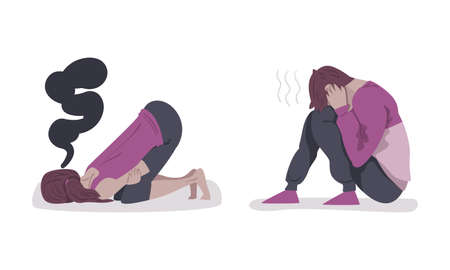1. Understanding Multiple Sclerosis and Its Impact on Mobility
Overview of Multiple Sclerosis (MS)
Multiple sclerosis, often called MS, is a chronic disease that affects the central nervous system, which includes the brain and spinal cord. In MS, the immune system mistakenly attacks the protective covering of nerve fibers, called myelin. This damage disrupts communication between the brain and other parts of the body. MS affects nearly 1 million people in the United States and can start at almost any age, but it’s most commonly diagnosed in adults between 20 and 40 years old.
Common Symptoms Affecting Movement
MS symptoms vary from person to person, but many people experience challenges with movement and mobility. These problems can be unpredictable and may come and go or gradually worsen over time. Here are some common symptoms that affect movement:
| Symptom | Description |
|---|---|
| Muscle Weakness | Weakness often occurs in the legs, making walking difficult. |
| Spasticity | Stiff or tight muscles can make movements awkward or painful. |
| Balance Problems | Dizziness or loss of balance increases the risk of falls. |
| Fatigue | Extreme tiredness can limit daily activities and exercise. |
| Numbness or Tingling | Sensations in arms or legs can make movement harder to control. |
| Trouble Walking (Gait Disturbance) | People may drag their feet, trip easily, or need assistive devices like canes or walkers. |
Daily Life Challenges in the United States
Living with MS in America means facing unique day-to-day hurdles. Many public spaces follow ADA (Americans with Disabilities Act) standards, but accessibility still varies greatly. Getting around busy cities or rural areas can be tough for those who use wheelchairs or have trouble walking. At work, people with MS might need flexible schedules or special equipment to manage fatigue and stay productive. Access to specialized care also depends on health insurance coverage, which differs by state and provider.
Key Challenges Faced by Individuals with MS:
- Transportation: Public transit options may not always be accessible for those with mobility impairments.
- Workplace Accommodations: Some jobs require adjustments like remote work, adjustable desks, or extra breaks.
- Healthcare Access: Regular visits to neurologists, therapists, and rehabilitation centers may be limited by insurance plans or travel distance.
- Mental Health: Coping with ongoing symptoms can lead to anxiety or depression, impacting overall quality of life.
- Social Participation: Attending family gatherings or community events sometimes requires extra planning due to fatigue or physical barriers.
The Importance of Adaptive Exercise Programs
Because MS affects everyone differently, adaptive exercise programs are crucial for maintaining strength, flexibility, and independence. These programs are specially designed to help people overcome physical limitations while staying safe and active—helping them thrive in their daily lives across America.
2. Principles of Adaptive Exercise for People with MS
When designing adaptive exercise programs for individuals living with Multiple Sclerosis (MS), it’s essential to focus on safety, accessibility, and personal needs. Each person’s experience with MS is unique, so exercise routines should be tailored to match their abilities and goals.
Key Guidelines for Tailoring Exercise Programs
Safety First
For people with MS, safety is always the top priority. Fatigue, muscle weakness, and balance issues can increase the risk of falls or injuries. Here are some safety tips:
- Choose stable surfaces and supportive footwear.
- Avoid overheating by exercising in cool environments and staying hydrated.
- Start slow and build up gradually—listen to your body!
- Have a support person or assistive device nearby if needed.
Accessibility Matters
Making exercise accessible means removing barriers that might prevent participation. This could include modifying exercises to be performed while seated, using resistance bands instead of weights, or breaking workouts into shorter sessions throughout the day.
| Barrier | Adaptive Solution |
|---|---|
| Fatigue | Shorter, more frequent sessions; include rest breaks |
| Limited Mobility | Chair-based or pool exercises |
| Balance Problems | Use of rails, grab bars, or a spotter; perform exercises near a wall |
| Sensitivity to Heat | Exercise indoors with air conditioning; use cooling towels or vests |
Individualized Adaptations
No two people with MS have exactly the same symptoms or limitations. That’s why personalized adaptations are so important. An individualized approach considers:
- The current level of physical ability
- Personal goals (e.g., improving balance, building strength)
- The presence of other health conditions (like arthritis or heart disease)
- Preferences for types of activity (walking, swimming, yoga, etc.)
Example: Customizing a Walking Program
| User Need | Adaptation Example |
|---|---|
| Trouble walking long distances | Break walks into short intervals with rest stops in between |
| Poor balance outdoors | Walk on indoor tracks or use a treadmill with handrails |
| Sensitivity to uneven surfaces | Select flat, even pathways and avoid rough terrain |
The key takeaway is that adaptive exercise isn’t one-size-fits-all. By focusing on safety, accessibility, and individual needs, people with MS can find ways to stay active and improve quality of life.

3. Evidence-Based Exercise Modalities and Their Benefits
Aquatic Therapy
Aquatic therapy, also known as water-based exercise, is popular among people with multiple sclerosis (MS) in the United States. The buoyancy of water helps reduce stress on joints and muscles, making it easier for individuals with limited mobility to move. Studies show that aquatic therapy can improve balance, muscle strength, and overall endurance. Many community centers and local YMCAs offer accessible pools with adaptive programs.
Benefits of Aquatic Therapy for MS
| Symptom Addressed | How Aquatic Therapy Helps |
|---|---|
| Muscle Weakness | Water resistance builds strength without high impact. |
| Fatigue | Cool water helps manage body temperature and energy levels. |
| Poor Balance | Buoyancy provides support, reducing fall risk. |
Resistance Training
Resistance training uses weights, resistance bands, or body weight to build muscle strength. Research supports its safety and effectiveness for people with MS when supervised by trained professionals. Regular resistance exercises can help slow down muscle loss, increase walking ability, and boost confidence in daily activities.
Key Benefits of Resistance Training
- Improved muscle tone and strength
- Better mobility and walking speed
- Enhanced independence in daily tasks
Yoga for MS Symptom Management
Yoga combines gentle stretching, breathing techniques, and mindfulness. American research shows yoga can be adapted for all ability levels, even for those who use wheelchairs or need to stay seated. Yoga may help reduce MS symptoms like spasticity (muscle stiffness), pain, fatigue, and depression.
Main Advantages of Yoga for MS
| Symptom Addressed | Yoga Benefit |
|---|---|
| Spasticity & Stiffness | Gentle stretches improve flexibility and relaxation. |
| Anxiety & Depression | Mindfulness techniques support mental well-being. |
| Pain & Fatigue | Breathwork encourages relaxation and energy management. |
Selecting the Right Modality for Each Individual
Choosing an exercise program depends on personal symptoms, goals, and access to resources. Many Americans with MS benefit from combining different types of exercise based on their needs. Working with a physical therapist or certified adaptive fitness instructor can help create a plan that is both safe and enjoyable.
4. Cultural Considerations and Resources in the US
Understanding the American Lifestyle
The United States is known for its diverse population and fast-paced lifestyle. Many Americans value independence, convenience, and community engagement. When designing adaptive exercise programs for people with Multiple Sclerosis (MS), it is important to consider daily routines, transportation options, and the availability of local resources. Programs that offer flexibility—such as online classes, home-based exercises, and options at various times of day—can help people with MS fit activity into their busy lives.
Local Resources for Adaptive Exercise
Access to adaptive exercise programs varies by region, but many cities and towns provide resources to help people with MS stay active. Local gyms, hospitals, and rehabilitation centers may offer special classes or equipment. In addition, non-profit organizations often run programs specifically designed for people with disabilities.
| Resource Type | Examples | How They Help |
|---|---|---|
| Community Centers | YMCA, city rec centers | Offer group classes, accessible pools, social support |
| Support Groups | National MS Society chapters | Peer encouragement, shared experiences, activity meet-ups |
| Online Platforms | MS-specific fitness apps, Zoom classes | Flexible scheduling, home access, guided workouts |
| Rehab Clinics | Physical therapy offices | Personalized exercise plans, professional supervision |
The Role of Support Groups and Community Centers
Support groups and community centers are central to American culture when it comes to health and wellness. They provide a safe space for people with MS to connect with others facing similar challenges. Many groups organize walking clubs, yoga sessions, or adapted sports teams. These activities not only improve physical health but also boost mental well-being by building friendships and reducing isolation.
How to Find Adaptive Exercise Opportunities Near You
- Check with your local YMCA or recreation center about adaptive fitness classes.
- Contact the National Multiple Sclerosis Society for nearby support groups or events.
- Ask your healthcare provider about referrals to physical therapists specializing in MS.
- Search online for virtual exercise programs tailored to people with disabilities.
Making Exercise Part of Everyday Life
Cultural attitudes in the US encourage self-advocacy and participation in community life. By taking advantage of available resources and connecting with supportive networks, people living with MS can find adaptive exercise options that fit their needs and lifestyles.
5. Implementing and Sustaining Adaptive Exercise Programs
Best Practices for Program Delivery
When it comes to adaptive exercise programs for people with Multiple Sclerosis (MS), its essential to focus on safety, accessibility, and individual needs. Here are some best practices to consider:
| Practice | Description |
|---|---|
| Individualized Assessment | Start with a personal evaluation by a physical therapist or qualified professional to determine strengths, limitations, and goals. |
| Accessible Locations | Choose exercise settings that are wheelchair-friendly, have accessible restrooms, and provide supportive equipment as needed. |
| Flexible Scheduling | Offer classes at various times of day or provide virtual options to accommodate fatigue or transportation challenges. |
| Education and Training | Instructors should be trained in MS-specific adaptations, including heat sensitivity management and fall prevention. |
| Progress Tracking | Use simple tools like exercise logs or apps to monitor progress and celebrate milestones. |
Tips for Motivating Adherence
Sticking to an exercise routine can be tough, especially with the unpredictable symptoms of MS. Here are some tips to boost motivation and make workouts part of everyday life:
- Set Realistic Goals: Break down big objectives into small, achievable steps. Celebrate every success!
- Create Social Connections: Exercising with friends or joining group classes can increase accountability and make sessions more enjoyable.
- Use Reminders: Schedule workouts on your calendar or set phone alarms as gentle nudges.
- Focus on Enjoyment: Choose activities you actually like—whether it’s swimming, yoga, or adaptive cycling.
- Track Progress: Use journals or apps to see how far you’ve come. Seeing improvement can be super motivating.
Strategies for Long-Term Engagement
Sustaining an exercise program over the long haul requires more than just good intentions. Here are proven strategies for keeping people with MS engaged for the long term:
| Strategy | How It Helps |
|---|---|
| Diverse Activities | Rotating between different types of exercises (strength, balance, cardio) prevents boredom and overuse injuries. |
| Build a Support Network | A strong community—family, friends, trainers—can offer encouragement when motivation dips. |
| Adapt as Needed | If symptoms change, modify routines rather than stopping altogether. Flexibility is key! |
| Praise Consistency Over Perfection | Aim for regular movement rather than perfect attendance. Missing a session is OK; just get back at it when possible. |
| Celebrate Milestones | Acknowledge achievements both big and small—maybe treat yourself to new workout gear after meeting a goal. |
Cultural Considerations for American Settings
In the United States, many communities value inclusivity and independence. Make sure programs reflect this by offering choices in activity type and location. Consider partnering with local MS support groups or recreational centers to create welcoming environments where everyone feels comfortable participating. Remember: building trust and fostering empowerment are just as important as the exercises themselves!


